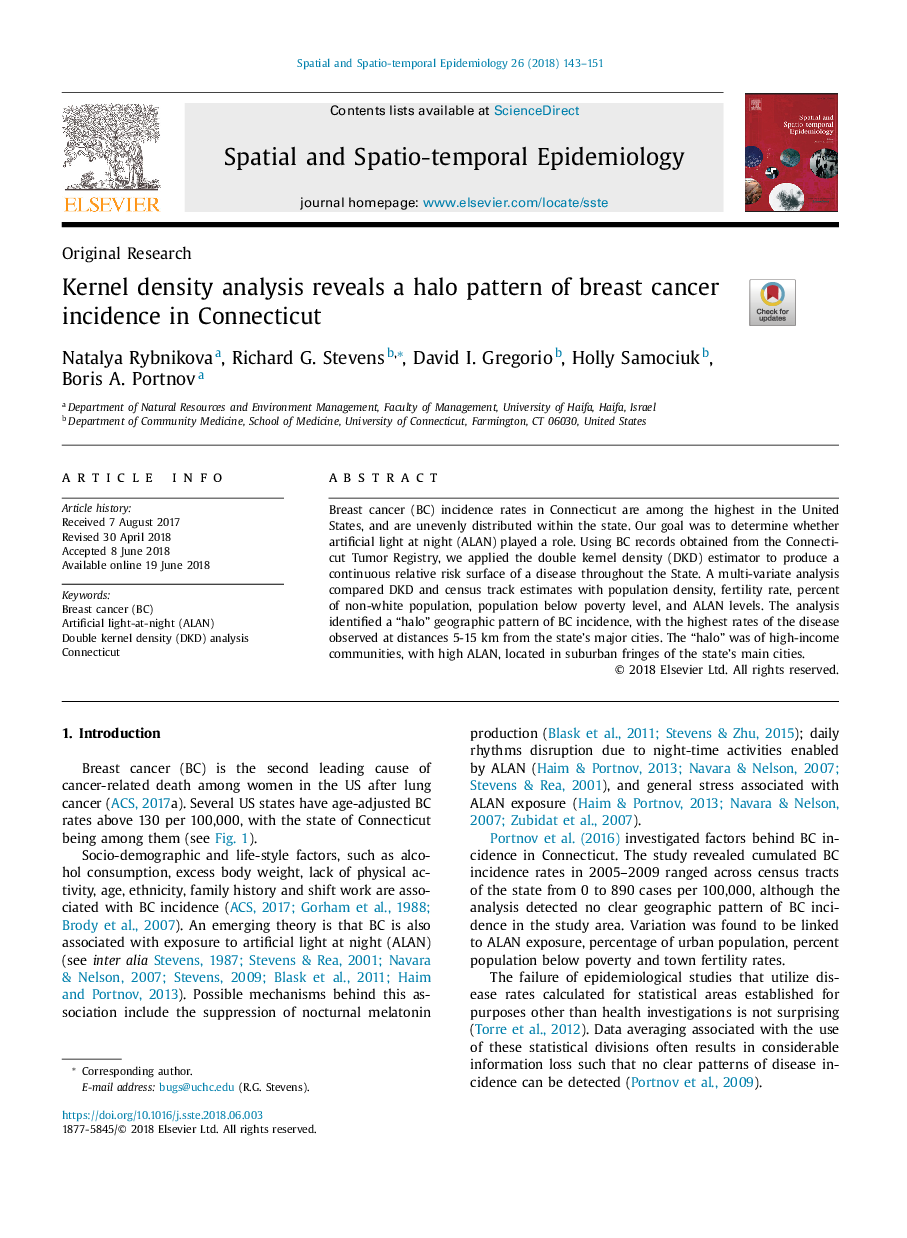| Article ID | Journal | Published Year | Pages | File Type |
|---|---|---|---|---|
| 7495763 | Spatial and Spatio-temporal Epidemiology | 2018 | 9 Pages |
Abstract
Breast cancer (BC) incidence rates in Connecticut are among the highest in the United States, and are unevenly distributed within the state. Our goal was to determine whether artificial light at night (ALAN) played a role. Using BC records obtained from the Connecticut Tumor Registry, we applied the double kernel density (DKD) estimator to produce a continuous relative risk surface of a disease throughout the State. A multi-variate analysis compared DKD and census track estimates with population density, fertility rate, percent of non-white population, population below poverty level, and ALAN levels. The analysis identified a “halo” geographic pattern of BC incidence, with the highest rates of the disease observed at distances 5-15 km from the state's major cities. The “halo” was of high-income communities, with high ALAN, located in suburban fringes of the state's main cities.
Keywords
Related Topics
Health Sciences
Medicine and Dentistry
Public Health and Health Policy
Authors
Natalya Rybnikova, Richard G. Stevens, David I. Gregorio, Holly Samociuk, Boris A. Portnov,
